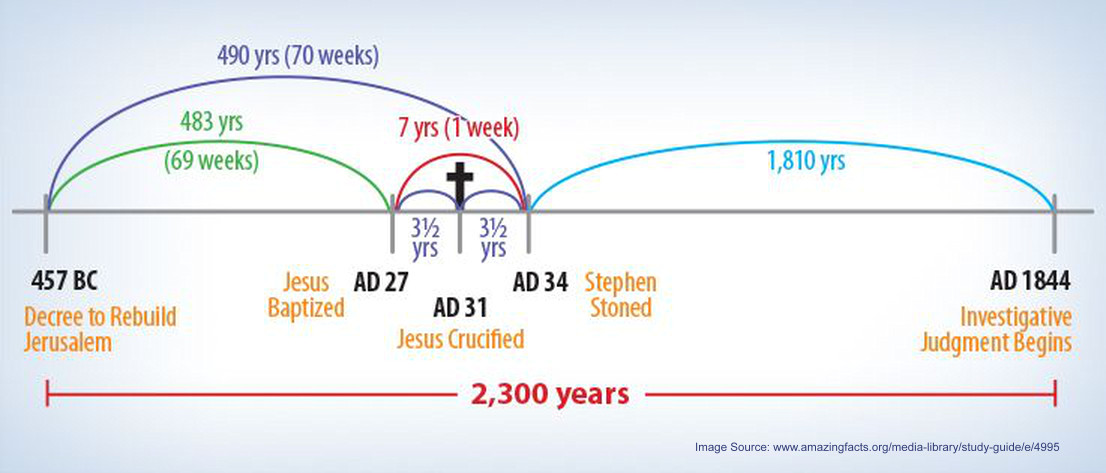Friday, March 6
Below is the chart explaining how the 70-week prophecy of Daniel 9:24-27 ties in with and forms the starting point of the 2,300-year prophecy of Daniel 8:14. If you count 2,300 years from 457 B.C. (remembering to delete the nonexistent zero year), you get 1844; or, if you count the remaining 1,810 years from A.D. 34 (2,300 minus the first 490 years), you come to 1844, as well. Thus, the cleansing of the sanctuary in Daniel 8:14 can be shown to start in 1844.
Notice, too, how the 1844 date fits with what we saw in Daniel 7 and 8. That is, the judgment in Daniel 7, which is the same thing as the cleansing of the sanctuary in Daniel 8 (see the last two weeks’ lessons), occurs after the 1,260-years of persecution (Daniel 7:25) and yet before the Second Coming of Jesus and the establishment of His eternal kingdom.

Discussion Questions:
1. Scholars have said, and rightly so, that the 2,300- day prophecy and the 70-week prophecy are really just one prophecy. Why would they say that? What evidence can you find to back up that assertion?
2. What can we learn from Daniel’s intercessory prayer that can help us in our own intercessory prayer life?
3. Christ’s sacrifice in our behalf is our only hope. How should this help keep us humble and, even more important, make us more loving and forgiving of others? What should Luke 7:40-47 say to all of us?
4. Look at how central Scripture is to Daniel’s prayer and his hope. After all, the nation has been savagely defeated, the people exiled, their land ravaged, and their capital destroyed. And yet he has the hope that despite all this, the people will go back home. Where could he have gotten this hope other than from the Bible and God’s promises written in it? What should this tell us about the hope we can have as well from the promises in the Word?